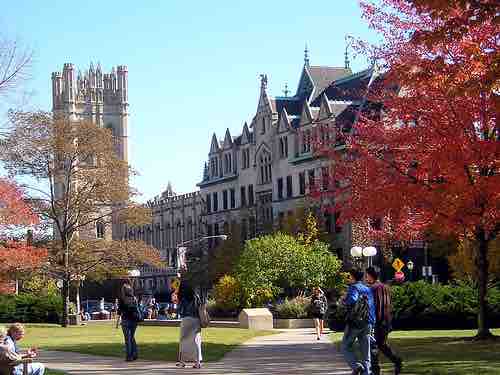Sociologists use the term "upper-middle class" to refer to the social group consisting of higher-status members of the middle class. This is in contrast to the term "lower-middle class," which is used for the group at the opposite end of the middle class stratum, and to the broader term "middle class. " There is considerable debate as to how to define the upper-middle class. According to the rubric laid out by sociologist Max Weber, the upper-middle class consists of well-educated professionals with graduate degrees and comfortable incomes.
In 1951, sociologist C. Wright Mills conducted one of first major studies of the middle class in America. According to his definition, the middle class consists of an upper-middle class, made up of professionals distinguished by exceptionally high educational attainment and high economic security; and a lower-middle class, consisting of semi-professionals. While the groups overlap, differences between those at the center of both groups are considerable.
Among modern sociologists, the American upper-middle class is defined using income, education, and occupation as primary indicators. There is some debate over what exactly the term "upper-middle class" means, but in academic models, the term generally applies to highly educated, salaried professionals whose work is largely self-directed. The U.S. upper-middle class consists mostly of white-collar professionals who have a high degree of autonomy in their work. The most common professions of the upper-middle class tend to center on conceptualizing, consulting, and instruction. They include such occupations as lawyer, physician, dentist, engineer, professor, architect, civil service executive, and civilian contractor. Many members of the upper-middle class have graduate degrees, such as law, business, or medical degrees, which are often required for professional occupations. Educational attainment is a distinguishing feature of the upper-middle class. Additionally, household incomes in the upper-middle class commonly exceed $100,000, with some smaller one-income earners earning incomes in the high 5-figure range.
In addition to autonomy in their work, above-average incomes, and advanced educations, the upper middle class also tends to be powerful; members are influential in setting trends and shaping public opinion. Moreover, members of the upper-middle class are generally more economically secure than their lower-middle class counterparts. Holding advanced degrees and high status in corporations and institutions tends to insulate the upper-middle class from economic downturns. Members of this class are likely to be in the top income quintile, or the top 20% of the economic hierarchy.

University Campus
Advanced education is one of the most distinguishing features of the upper-middle class.